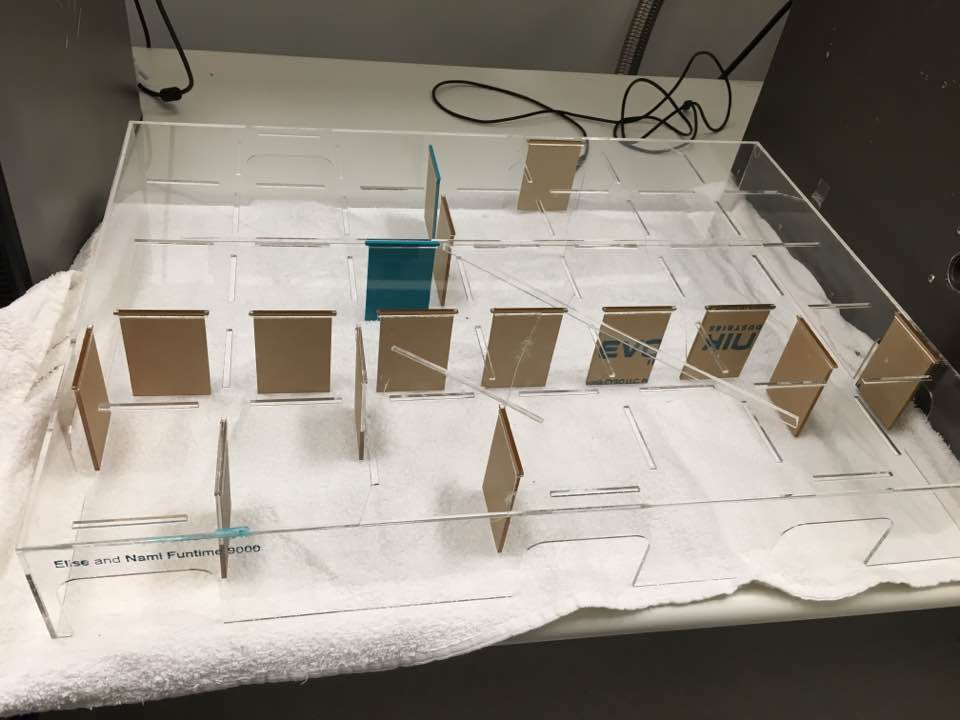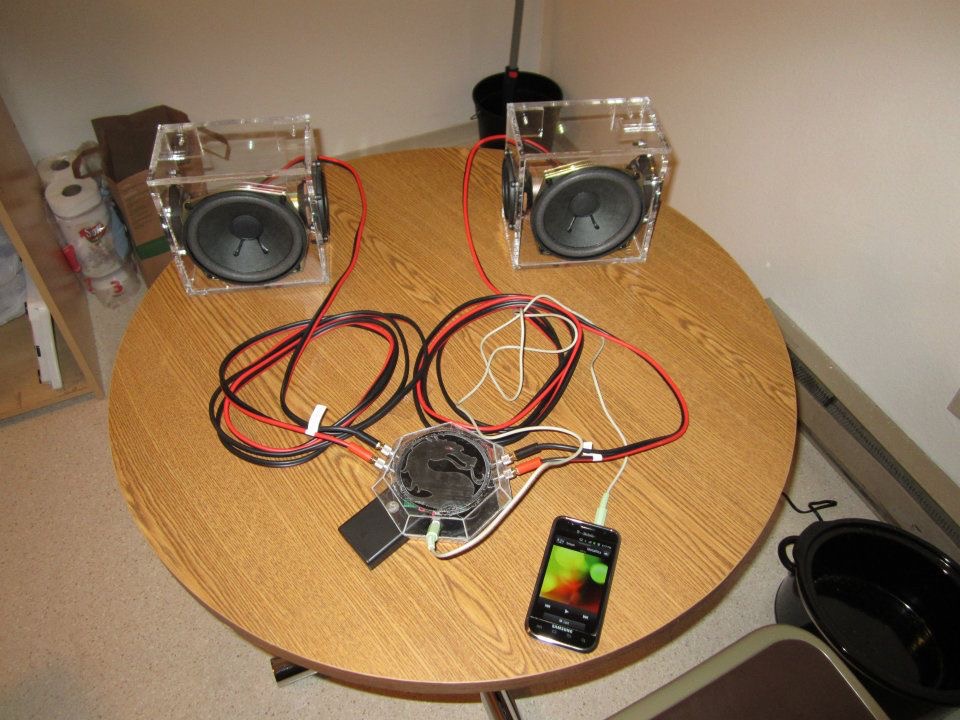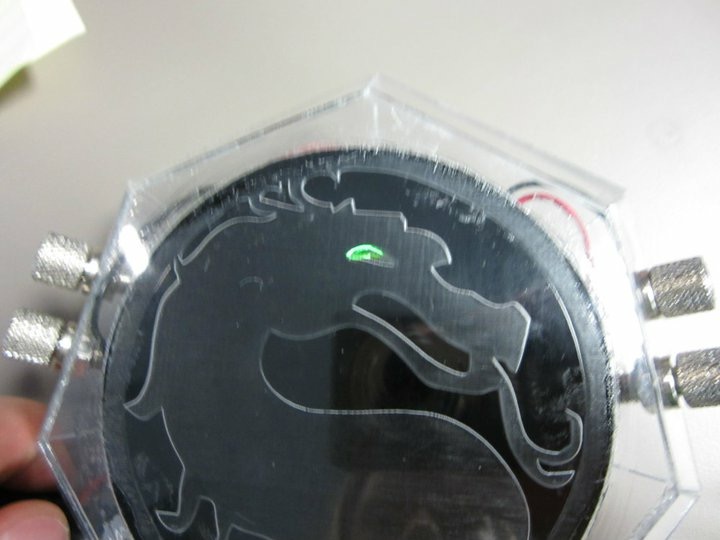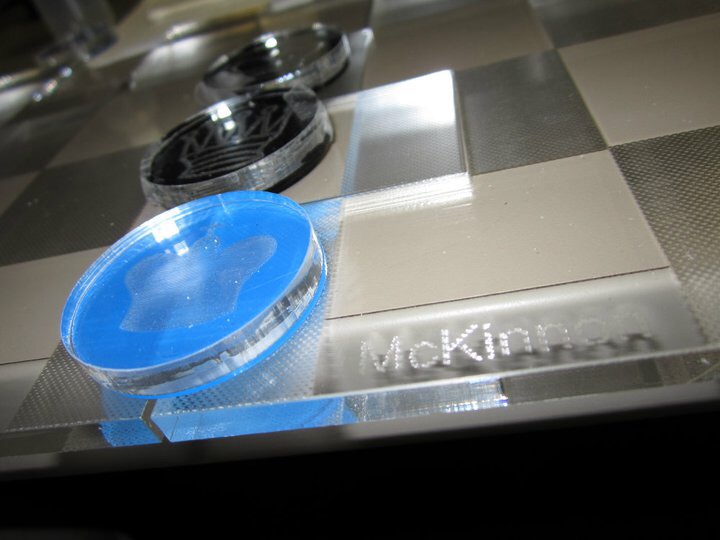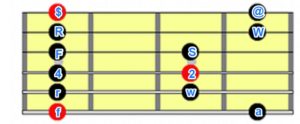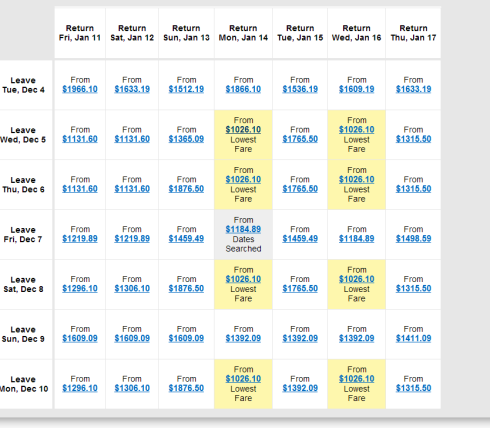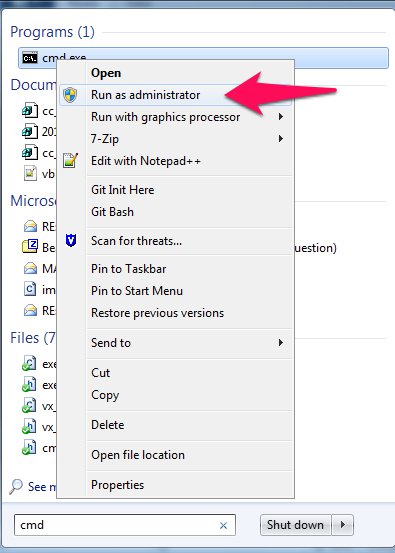 From a few weeks after I got hooked on climbing, before I even knew how to climb outside or set up a single pitch top rope safely, let alone lead a multipitch route safely, I had my eyes set on Snake Dike. Snake Dike is the name of a particularly popular and awesome climb up Half Dome in Yosemite. It always seemed so far away, one of those things that’s just fun to think about but “isn’t something I could do, at least not safely”. It has been sitting on my Life Bucket List for a long time. It now goes down as one of the best climbing adventures of my life.
From a few weeks after I got hooked on climbing, before I even knew how to climb outside or set up a single pitch top rope safely, let alone lead a multipitch route safely, I had my eyes set on Snake Dike. Snake Dike is the name of a particularly popular and awesome climb up Half Dome in Yosemite. It always seemed so far away, one of those things that’s just fun to think about but “isn’t something I could do, at least not safely”. It has been sitting on my Life Bucket List for a long time. It now goes down as one of the best climbing adventures of my life.
Thanks Ted and Jesse. I will remember this adventure forever.
The Overview
The logistics mattered greatly for a trip of this size, even for the option of giving up and heading back, we had to plan carefully and thoroughly.
We were considering only going as a party of two, as we couldn’t find a fourth person with skills necessary. Two people is faster than three and going slow can be dangerous on a route as long as this one. However, we decided to go as three, and boy did it turn out to be a great choice. As all the pitches are easy for a follower and difficult for a leader (extreme runouts), sending up a second follower is no big deal. In some ways, it probably made the trip easier as we could distribute our gear and make the trip lighter per person. Four would be the best for a big trip, but three turned out to be better than two in this case.
Our schedule came out something like this:
- 5pm Arrived in Yosemite, battled logistics and massive amounts of tourists to find friends and a place to sleep for the night without getting fined
- 7pm Carbed up and hydrated up
- 8pm Packed for next day
- 9pm Put in earplugs, wore eyemask, and slept
- 4am Woke and ate
- 5am Began 6 mile approach hike
- 9am Arrived at base of climb
- 10am Began climb
- 5pm Summited Half Dome
- 6pm Began 9 mile descent hike
- 11pm Mentally and physically started to break down, rested for a half hour or so
- 2am Arrived back at camp – we brushed some of our teeth then stumbled into our tents and fell asleep instantly
The Departure
Getting to Yosemite from the bay is a pain in the ass. If you leave after 7pm to avoid traffic, you arrive too late and are too tired to alpine start the next day. The best way is to leave the bay before 1pm, which means leaving the office around 12pm, gathering in a carpool, then taking off.
We’ve found the best compromise to be one of the following:
- Taking a half day of vacation on Friday
- Working extra earlier in the week
- Working remotely Friday afternoon if your type of work will allow that (not recommended for the driver)
The Arrival
Once in Yosemite, the next challenge arises. All the campsites are full, and the only way you could have possibly gotten one is if you booked a reservation site last year or have been sitting in the first come line since 4am to pick up your location when the office opens at 6am.
We’ve found the following strategies workable:
- Book sites a year ago
- Make friends. If they let you stay with them, definitely make the offer to pay for the whole campsite for their generosity
- Speaking Chinese has saved our asses twice and has also let me run into some awesome Chinese climbers visiting the US and Yosemite. It’s amazing how quickly you can genuinely bond with someone over language.
- Camp in a tent with a wilderness permit
Camp illegally Arrive extremely early for breakfast and rest yours eyes before having that breakfast. And leave very early before the rangers come by. If possible, do it next to cars that are parked for the night so you blend in. Take all responsibility for getting a ticket, still be respectful, and don’t park anywhere stupid.
- Sadly, I most often do this one – Having a car with a trunk that fits a bed comfortably comes in very handy. Make sure to still load your food into a bear box when doing this.
After you have found your campsite, attempt to boulder Midnight Lightning, probably the most famous problem in the world, both because the number of great climbers who have been shutdown on it (stout V8) and because of its location in the middle of Camp 4 Yosemite. You haven’t truly joined the climbing world until you make the dyno move for the lightning bolt hold. The legendary lightning bolt chalk emblem was drawn on shortly after the first ascent and is continually redrawn by the community.

The Ascent
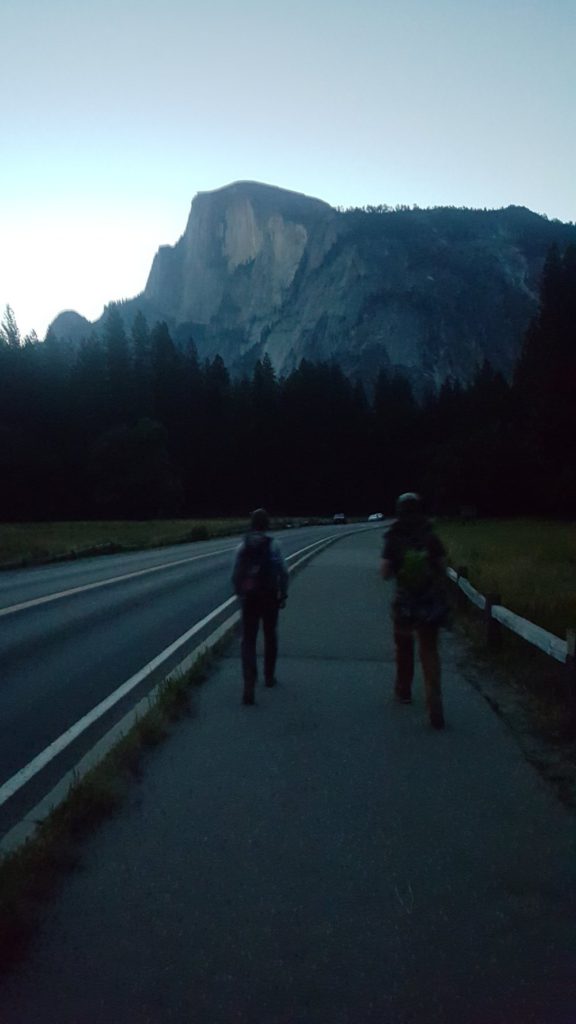
We are up. We are doing this. Ted, Jesse, and I are beaming with eagerness, anxiety, and happiness. The photo below was taken as the sun was still coming up. We were hiking to Curry Village, then hiking to the trailhead. That is Half Dome we are looking at.
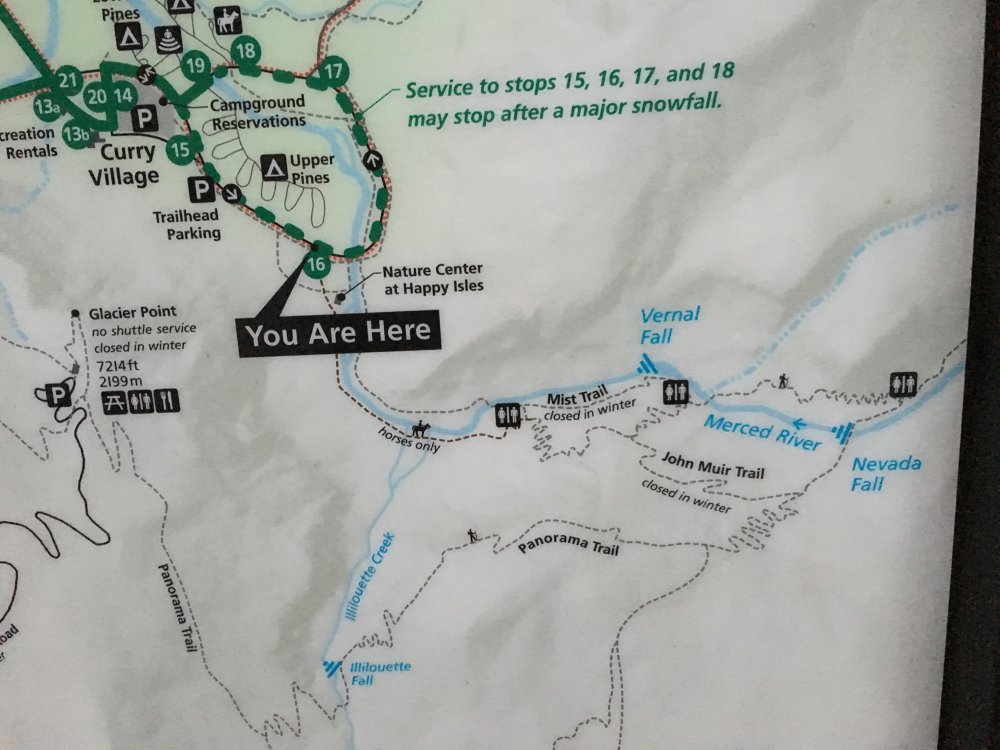
After reaching Curry Village and being told by a group of leather-clad, alcohol infused climbers of another era, “You have too many cams. You won’t need those,” we asked them for directions and were pointed along our way and given drunken smiles and wishes of good luck.
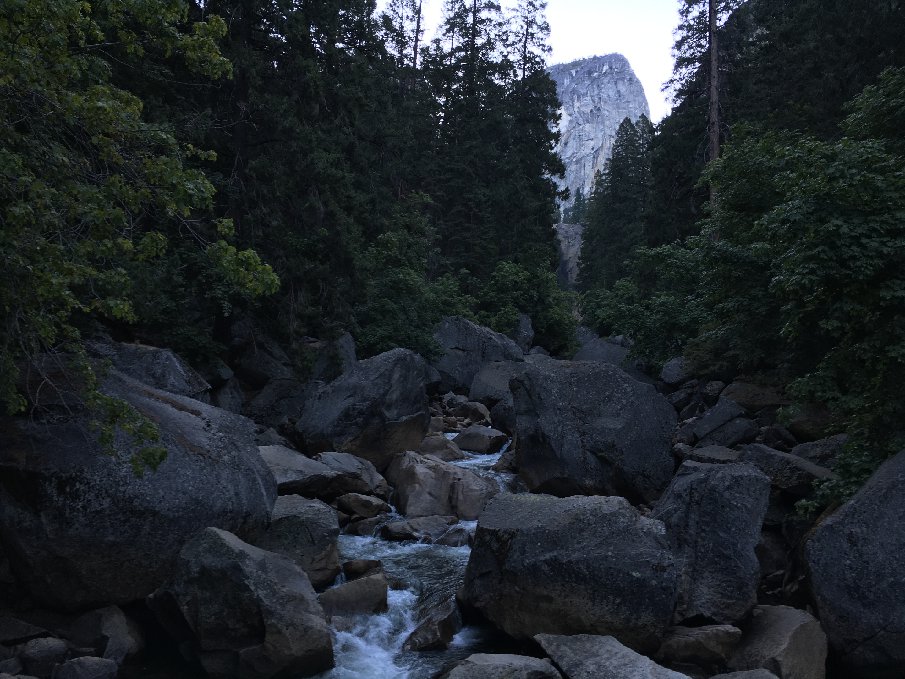
Looking up the gorgeous Merced River with a granite summit peeking in the background.
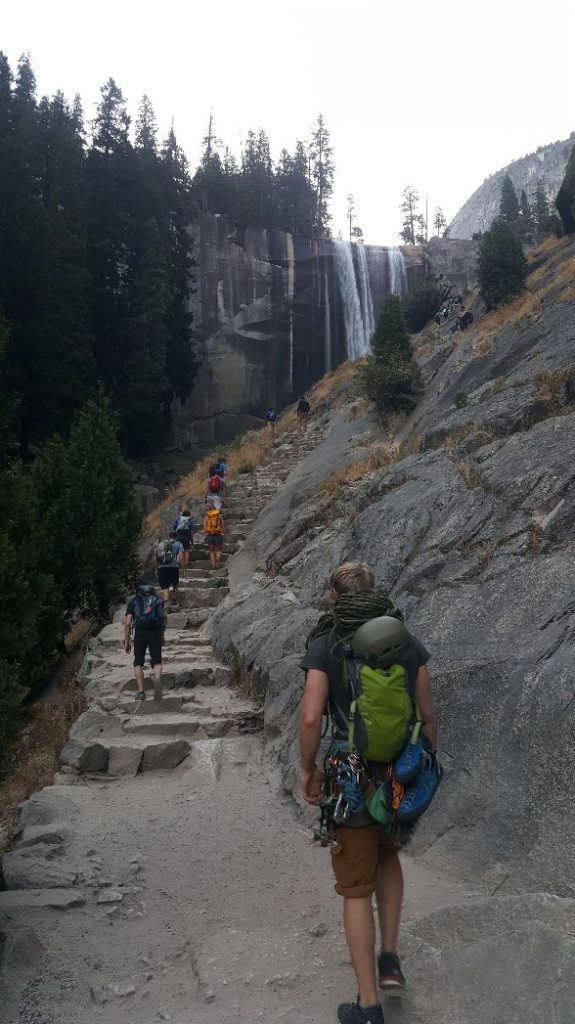
Coming up on Vernal Fall
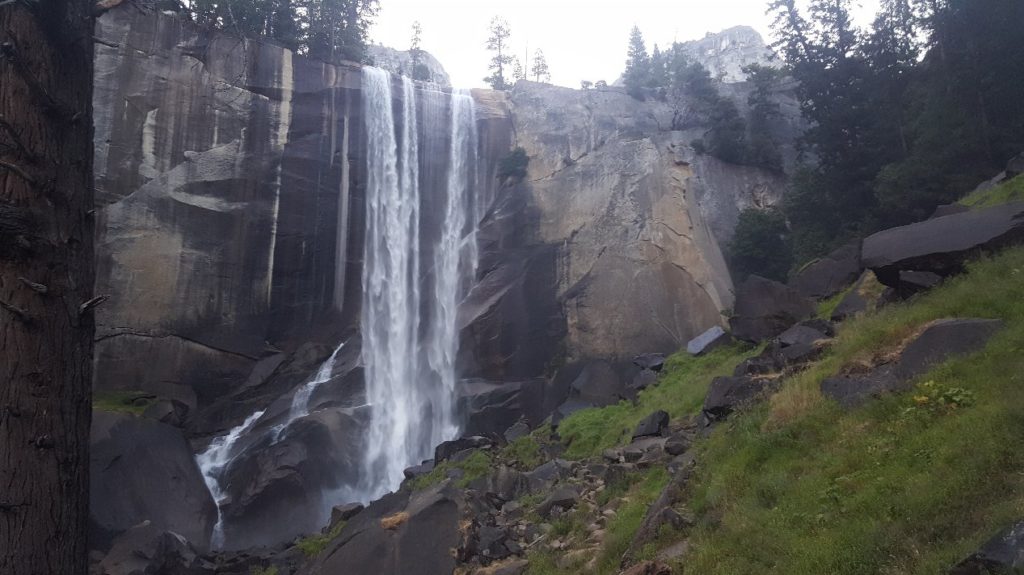
For Ted a few years ago, this was the end of his family adventure. For us three boys, it was about 7am, and after stopping for a picture, we stormed on!
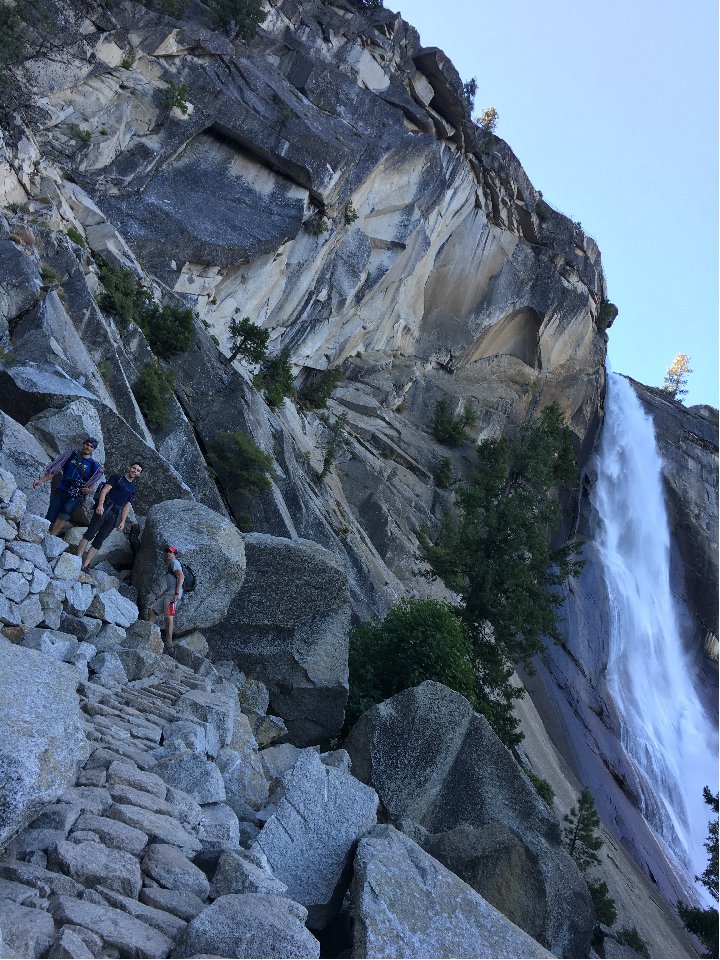
Ted and Jesse standing next to Nevada Fall, the second of the two awesome falls on the way to Snake Dike.
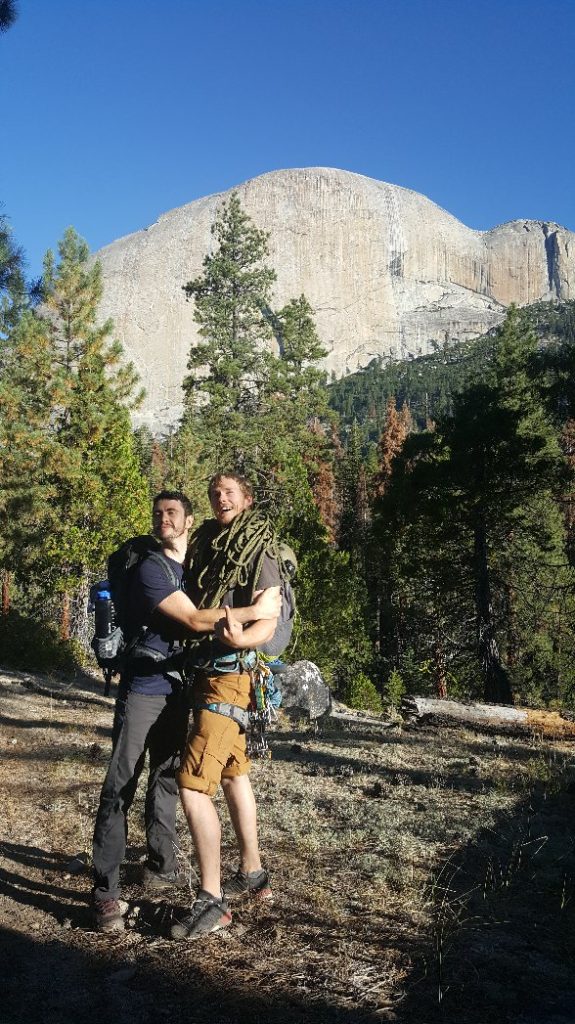
All of our dreams are coming true!! It’s Half Dome!!!!
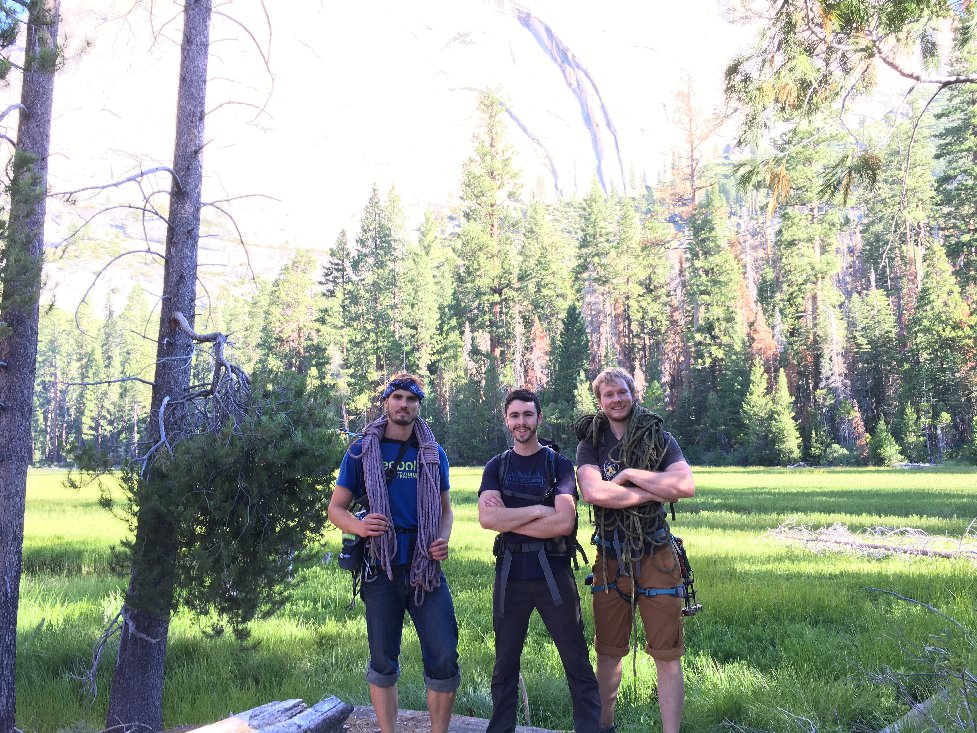
Arriving in the meadow underneath Half Dome. I brought along these purifying droplets to cure the water. I bought them under the description they were lightweight and perfectly treated the water without side affects like altering the taste, causing health discomfort, or taking valuable time to filter. We weren’t sure if they actually worked as the actual description on the dropper didn’t say anything about killing parasites or bacteria, just about cleaning contaminated RV water containers. Not having experience with filling up and curing wild water, we decided that there was a good chance I bought the wrong product. We cleverly decided to fill our first emptied water reservoir with creek water but held off on drinking it or applying the drops just yet. That way, we would have a supply of water if we absolutely needed it later.

Following the Cairns and looking back across our hike. Look at all that. It goes on for miles and miles. Gorgeous. I would like to backpack it someday.
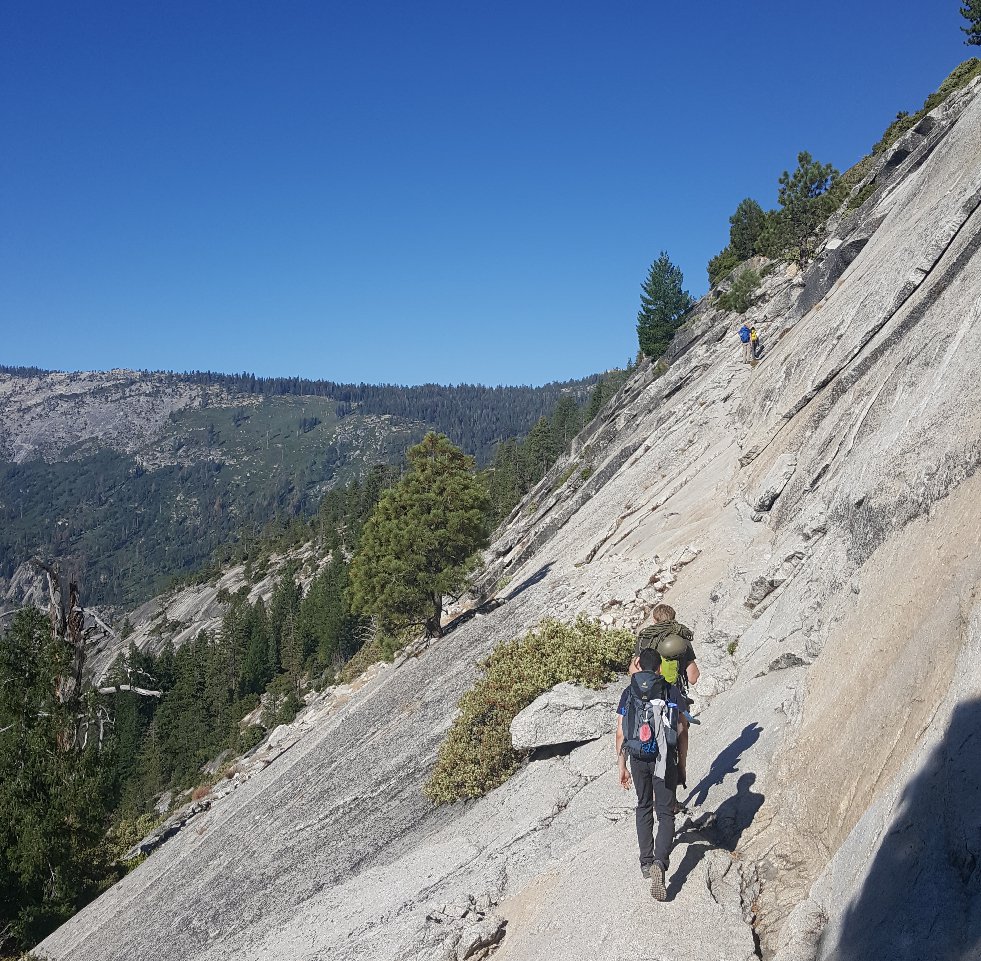
At this point in the trip, I was ecstatic about my real approach shoes. Well they are actually trail running shoes. But they were infinitely better (AND SAFER!) than tennis shoes. I was going up this slab granite with ease! They the Adidas Terrex if interested. I tested a variety of shoes and the slab grip abilities. These were the best performers and the most comfortable. They noticeably out performed the popular trail running shoe Salomon Speedcross in grip and control.
This is my least favorite part of climbing, that point where the terrain is challenging and there is little safety margin, apart from not making a mistake. We were considering roping up and placing gear if it got a little worse, but it was very manageable. If you are planning on climbing the runouts of Snake Dike, you better be able to get safely past this fairly easy approach.
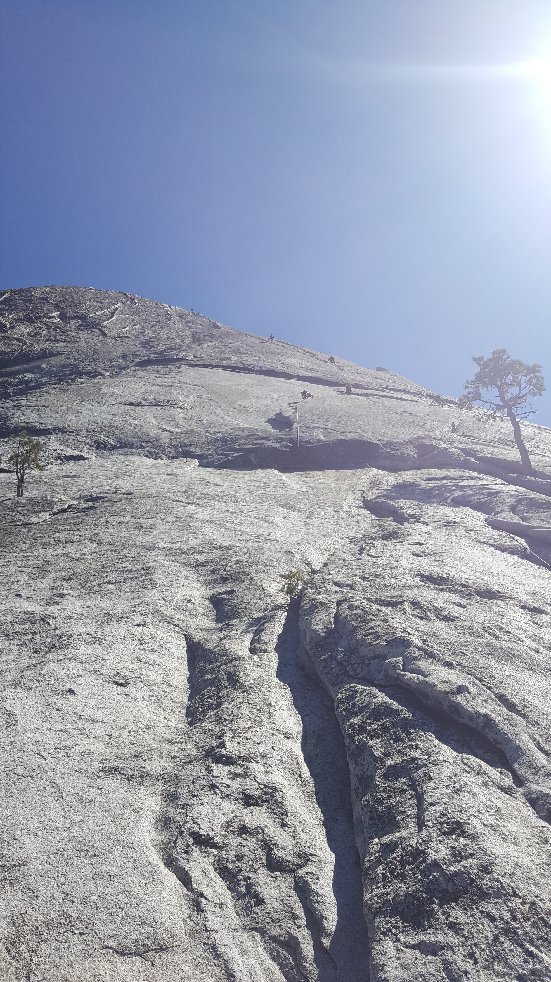
Looking up at the base of the climb. This is the first pitch. Technically, the hardest move on the climb is moving across the sheet of glass underneath the roof. There is a small crack smaller than finger tips for the hands. In my mind it wasn’t quite the crux of Snake Dike though, because it was a well protected move. It was not runout. But it was the hardest point in climbing skill needed and the most likely place to take a fall. Jesse led this pitch and also led what I believe was the true crux on pitch 2, a slopey mantle after a long traverse and runout. Great work Jesse!
Ted and I both Stephen Kinged the first pitch. This means you are too impatient for the belayer to start taking slack, so once you are safely on belay, you clip in to the rope as you quickly and aggressively ascend. Once at the crux, we waited for Jesse to pull up the rest of the slack. I went across first. I quickly found myself away from the comfort of top rope. As I was several moves into the sheet of glass crux, Ted’s rope came taut against the back of my calves as my own top rope pulled me laterally to the traversing piece of gear. It would have been a fairly bad fall, and I was not at all on the comfort of top rope. I knew I HAD to make the move. I could not lift a foot one at a time safely to clear the rope. I was mentally preparing to jump off the rock, over Ted’s rope, and grab for Ted’s rope with my hands in the event I started to slip (he was still safe at the last piece if I put full tension on his rope). With my plan in place. I eyeballed the sheet of glass I had to go across for any irregularities. There were slight microridges that would give me a slight advantage in friction. I carefully placed my toes on each one. One foot slipped out at the second step, but the front foot held. I quickly shifted weight and reached for the slight widening in the crimp. I now had a secure hand. I made it!
Ted quickly followed and wondered what all the fuss was about. Ted is about 6’4″. At least.

We made it! Pitch one complete! Notice the super awesome adjustable orange personal anchor. What a great personal. I was constantly looking for not so subtle ways to show it off and fish Jesse and Ted for compliments. Jesse and Ted both reluctantly acknowledged multiple times that yes, it was a decent personal and that I should be very proud of myself.
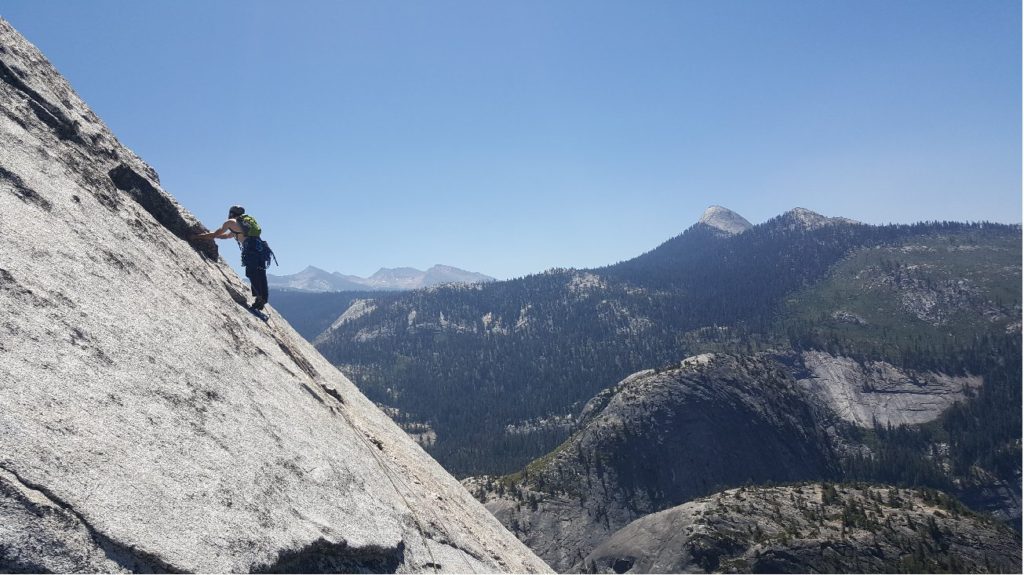
This was the start of pitch 2, Jesse on lead. In my opinion, this was the crux of the climb. The visual was also epic. Watching Jesse go around this feature with the Sierras in the background, I couldn’t help but ask Ted to belay as I snapped pictures. Gorgeous.
He is placing some gear in this questionable crack feature here, but then has to make a wide traverse to exceptionally solid bolts (thank god). After the bolts, it’s about a 15ft runout (not long by Snake Dike standards, but still scary) to a very technical friction slab traverse. In my opinion, those two friction steps with a move that’s like a friction mantle are the hardest in the entire climb. And it’s funny because with slab, the followers just get to skip along as if it’s easy climbing: both because any fall gets cut short from the top rope, and because any amount of upward helping force from the rope helps considerably in moving forward. Big props to Jesse “Captain Granite” Scarborough for sending this!! There are more slab runouts to go, 6 pitches to be exact, all featuring some amount of friction slab climbing, but this pitch gets my vote for the crux.
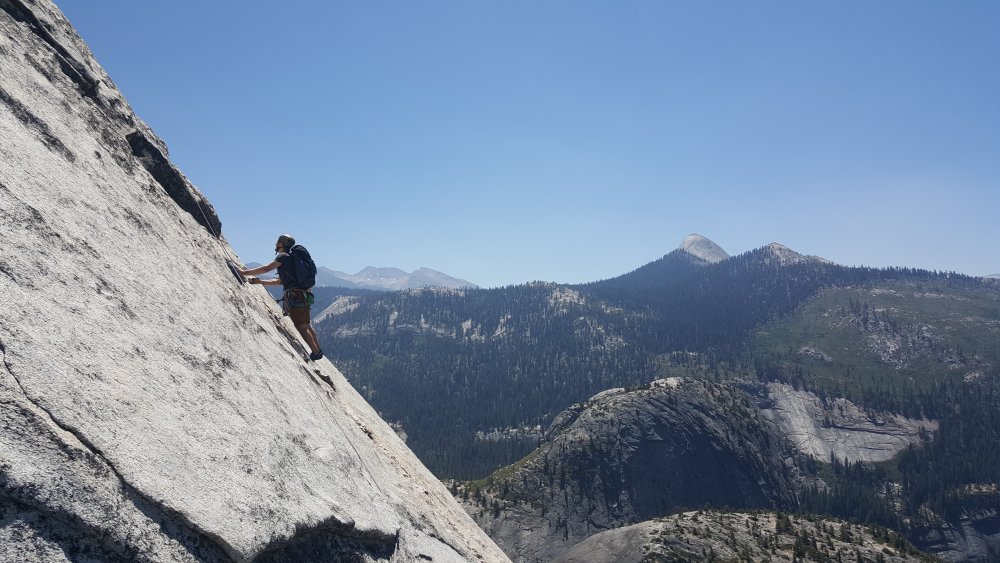
Here I found myself thinking, “Holy shit. Nice lead Jesse.”
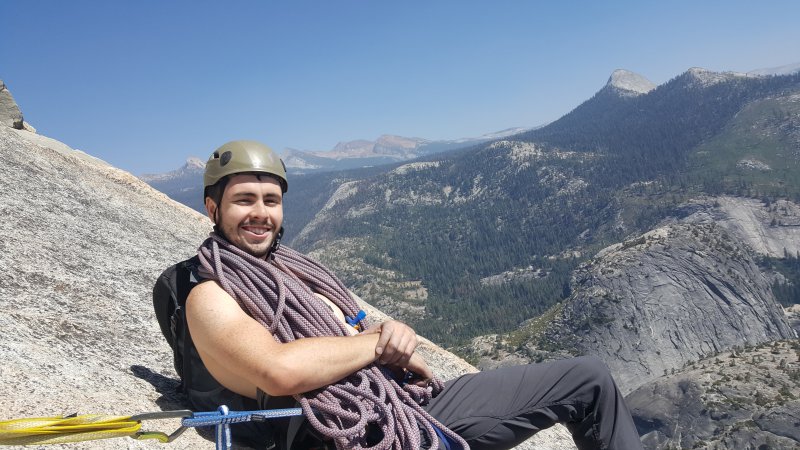
A very happy Jesse waiting for me at the anchor. This is awesome! We are climbing Snake Dike! Look at the view! Wow!
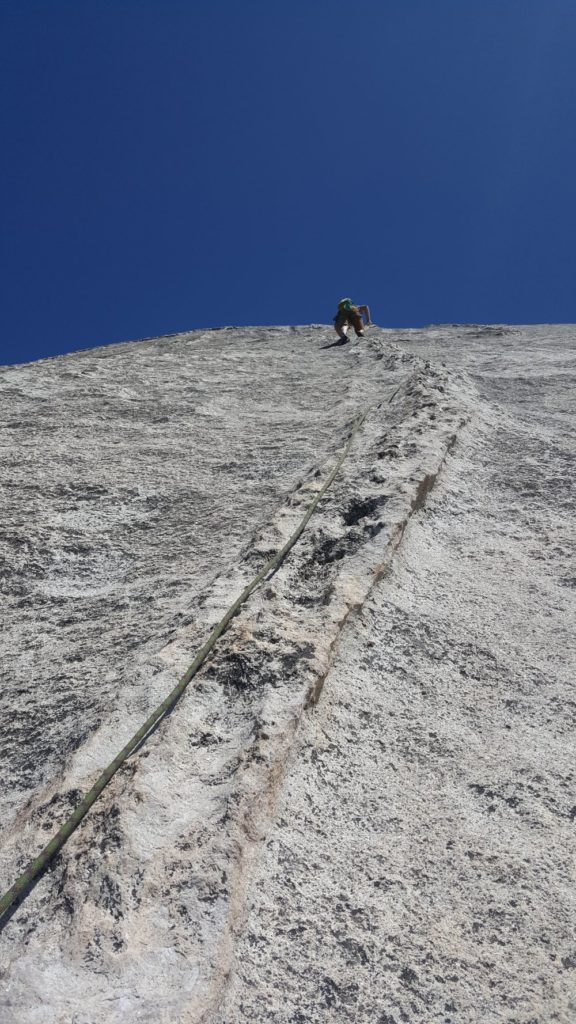
Pitch 3, first of the LONG runout pitches. I think this was rated 5.3 or something like that. But this wasn’t a gym climb. At that time, I was leading 5.11 in the gym and had numerous well-bolted outdoor 5.10’s and 5.11’s under my belt. However, I knew it wasn’t going to be a cake walk.
It was about 60′ between bolts at the most extreme situations, and it was consistently 30′ between bolts.
Even a mistake as little as 15′ past a bolt equates to a 30′ fall, almost certainly ending in a broken leg or worse. Best case, I would lose a lot of skin and have to descend and hike four hours just to get cell phone service. Worse case, I would die. This is something I hate this route for. Why can’t they just put in a few more bolts and make it safe? People have died on this route. Anyways, I highly recommend practicing slab climbing and working your way up to this. It’s easy and comfortable, but not at all what you think of when you think of “it’s only a 5.3!”
I was definitely scare and intimidated, but I knew it was well within my skill level to do safely. The climb wasn’t especially risky. It’s about as risky as walking on a curb with lava on both sides. I could do it, even with making a lot of minor mistakes. As long as I avoided catastrophic mistakes, I would be fine. What I specifically avoided was making moves onto questionable holds (things that could break), keeping three points of contact if i suspected breakage/slipppage, and moving deliberately. Thankfully the extreme popularity of the route leads itself to bomber holds. The only thing to watch is slipping out.
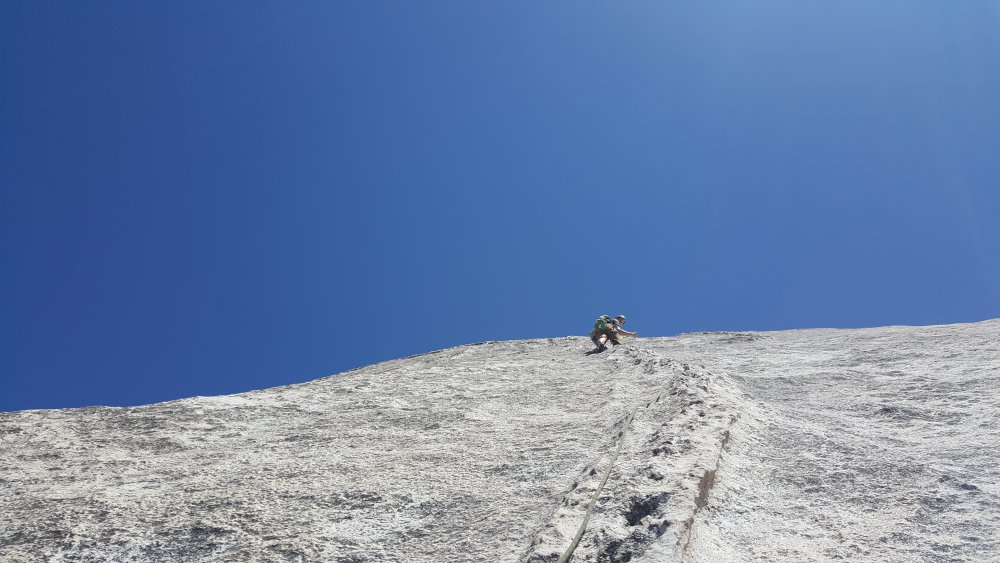
Giving Ted and Jesse a thumbs up! Chalking up, enjoying the climb and view, and not thinking about the fact the first bolt was still much higher.
Just in case my parents are reading and freaking out, this is similar to skiing a narrow Blue Square (medium difficulty) run right on the face of a cliff. It is only dangerous if you mess up enough to cross the threshold. Otherwise it’s just a normal Blue Square that’s taken slow and steady.

Check out Jesse’s sweet redundant, independent, and equalized anchor. Bomber!
This is the top of the final pitch. There’s this mysterious giant crack. I hung out squeezed in it as Ted followed Jesse up.
We actually roped up again for an additional pitch, mainly due to me freaking out that it was harder than what we just climbed and that we should stay roped for a bit.

Looking back on Ted, Jesse, and the Yosmite Valley. El Cap is the very vertical cliff in the distant valley behind.
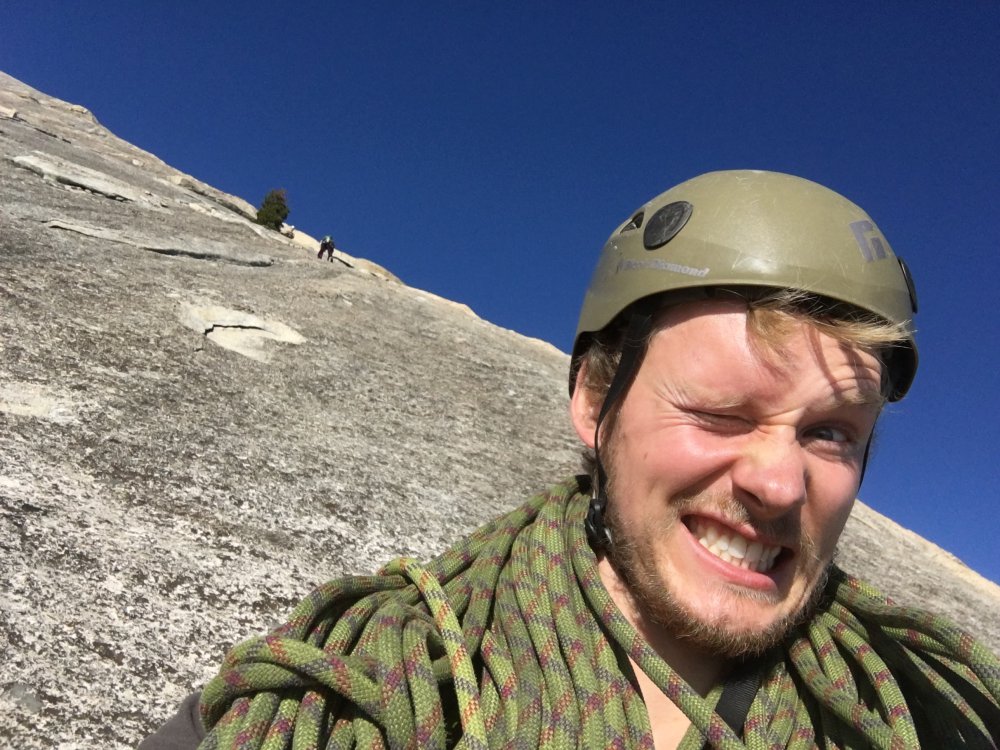
Errr, maybe let’s rope up again guys. This is pretty steep!!
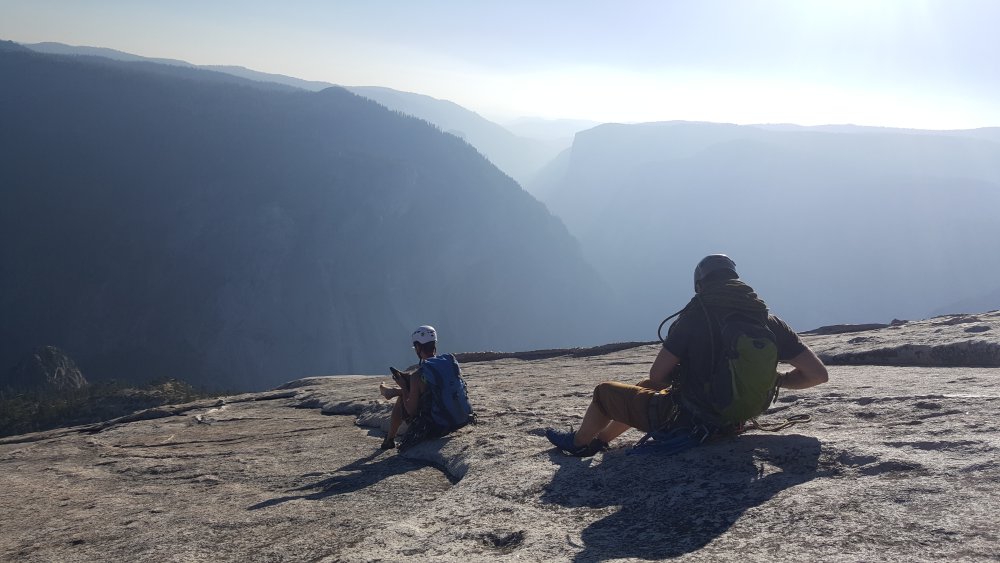
At this point it was somewhat safe to switch to other shoes. Notice how it’s still steep as all @#$%. Being the complete wuss I am, I took a breather and stayed in my rock climbing shoes for a good deal further. No reason to take dumb risks. It’s fairly hikeable, but one slip and you aren’t falling down to get back up: you are falling down and sliding/tumbling down Half Dome to become another statistic.
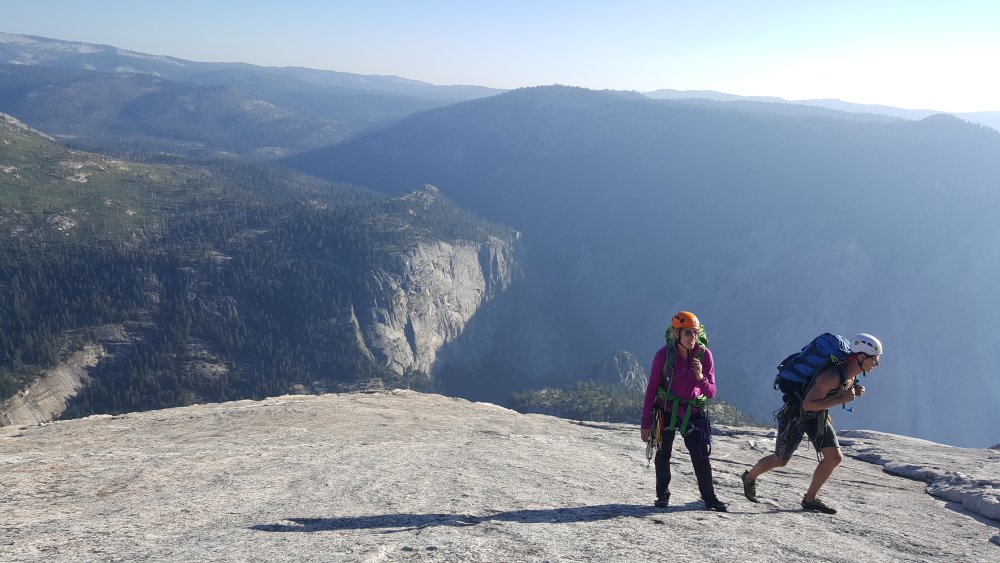
Here are two friends we met on the way. I forgot their names (Jesse or Ted do you remember?). Bryce and Angela maybe… They were great. Very friendly, strong, and experienced climbers. We ended up throwing Bryce a rope for safety when he stalled out on one of the slab pitches. It was rated 5.2, and I was on the slow struggle bus leading it. The whole pitch was a runout. Ted and Jesse of course skipped up it blindly. It was reassuring seeing a strong of a climber as Bryce also struggle and ask us to toss a rope. After he grabbed it, of course he then made the move easily. The old hard to lead, insanely easy to top rope principle of slab.
We asked Bryce and another group about the water curing droplets. He had the exact same ones and told us they were effective and popular for killing giardia and cysts.
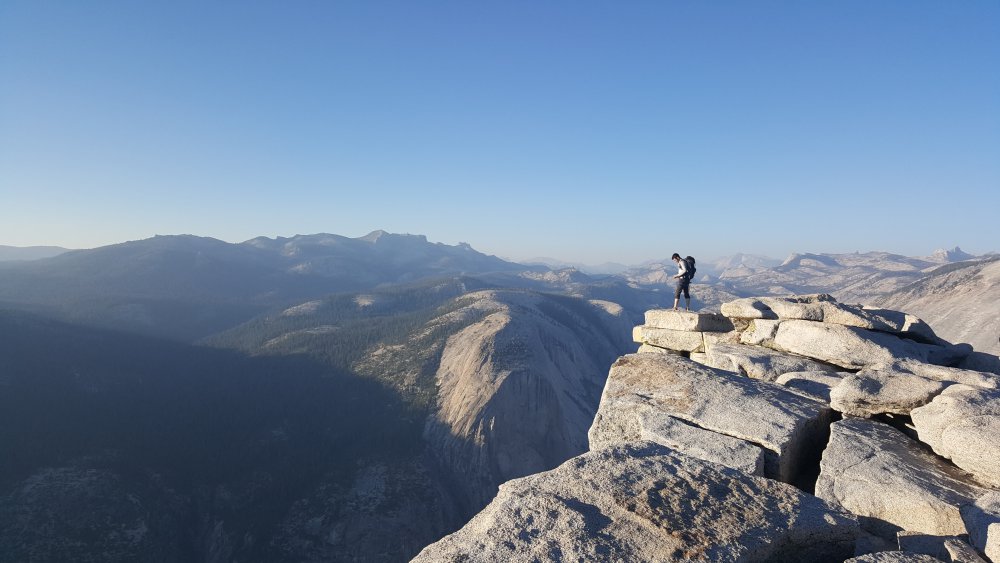
Jesse at the top of Yosemite Valley. He facetimed with his mom for a bit at the top haha. What an epic day and epic view. Jimmy Chin would be proud!
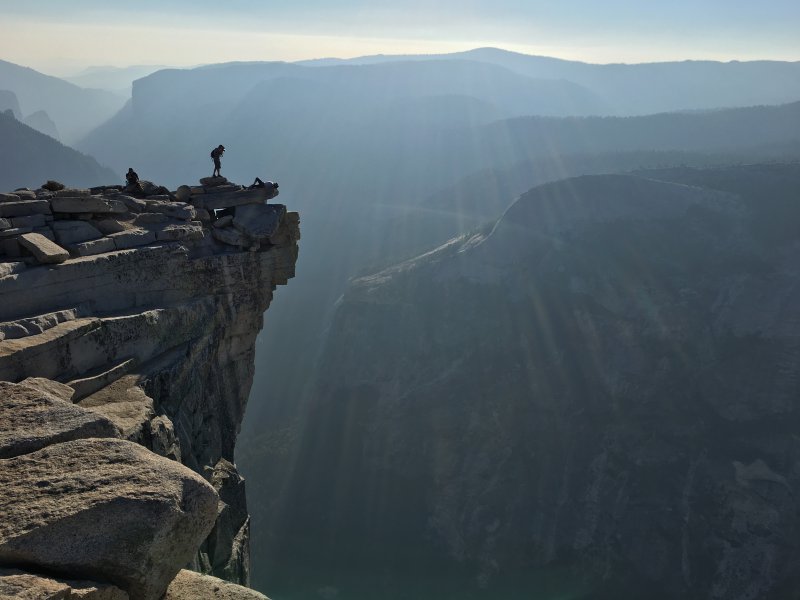
The obligatory shot off the visor of Half Dome. Jesse is laying right on the edge.
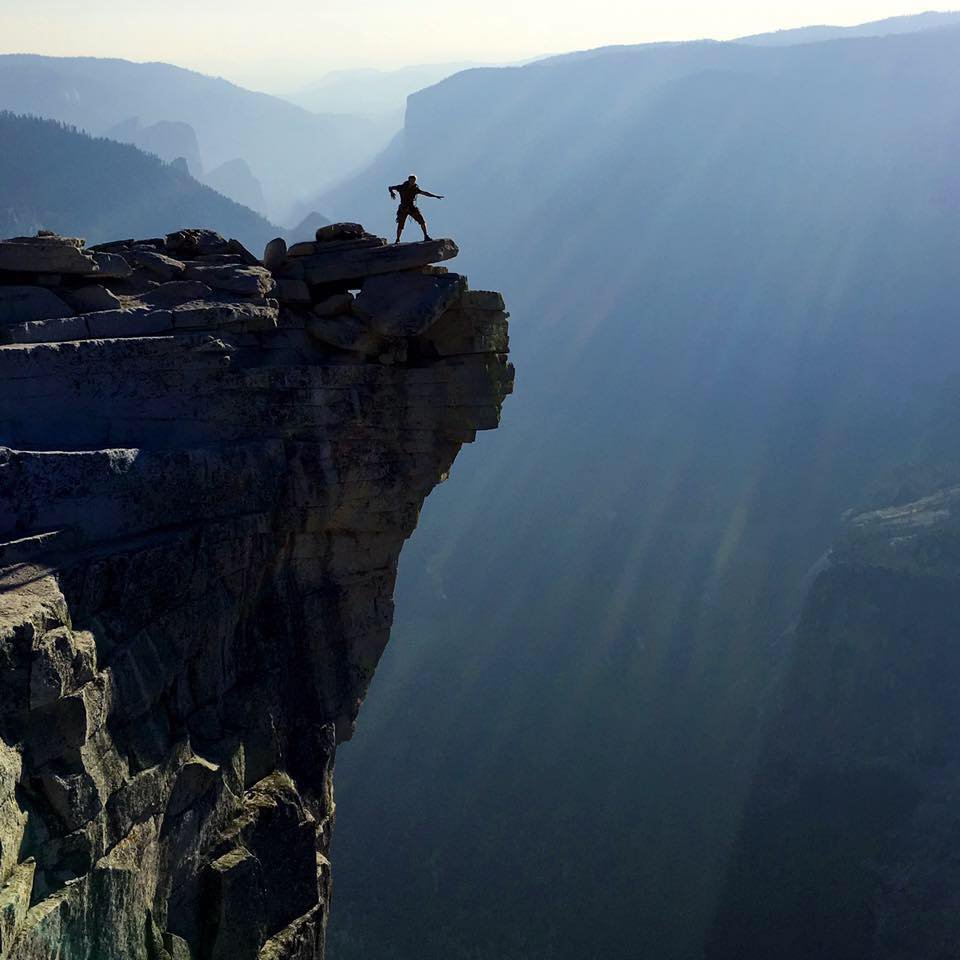
Irina insisted on photoshopping this for me. 5 minutes later, she sent me a picture with everyone standing by the side removed. Very convincing fake background. Awesome work!!

Ted sizing up which of the many practically limitless peaks to climb next. (:
The Descent
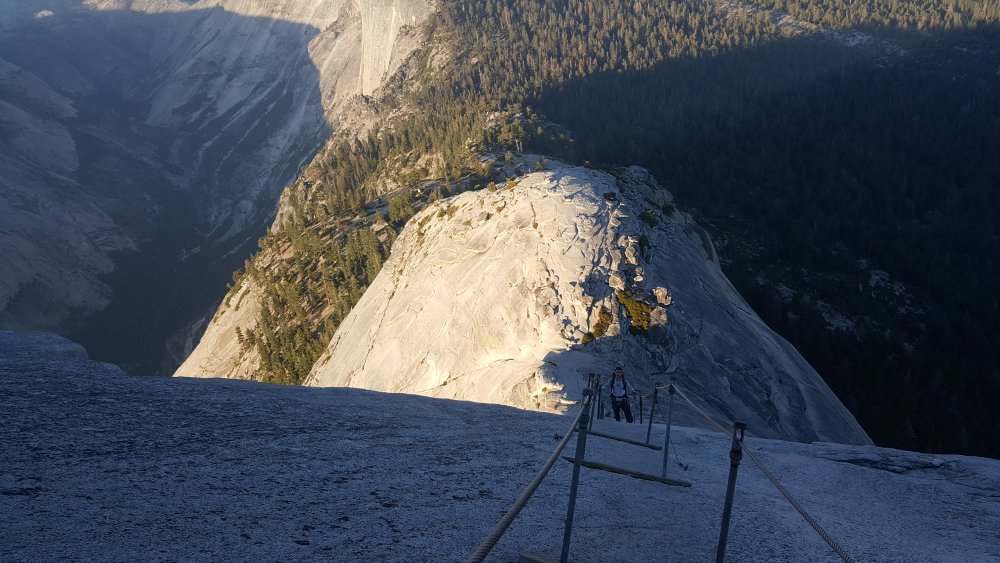
Here’s Jesse again, we are descending the north side of Half Dome. This is the cable route for the hikers. Wow I can’t believe normal hikers come up this. If I hiked it, I would definitely bring a climbing harness and anchor along. You have to be a damn solid hiker to make that safely.
We of course personal anchored in to the cables for backup then made our way down. I slipped once and was sure glad I had my personal or I would have died for sure.
Unbelievable that hikers go up and down this with tennis shoes on. Although when you have no backup, you are forced to go more carefully, but still. Insane the amount of people who do it regularly without incident.
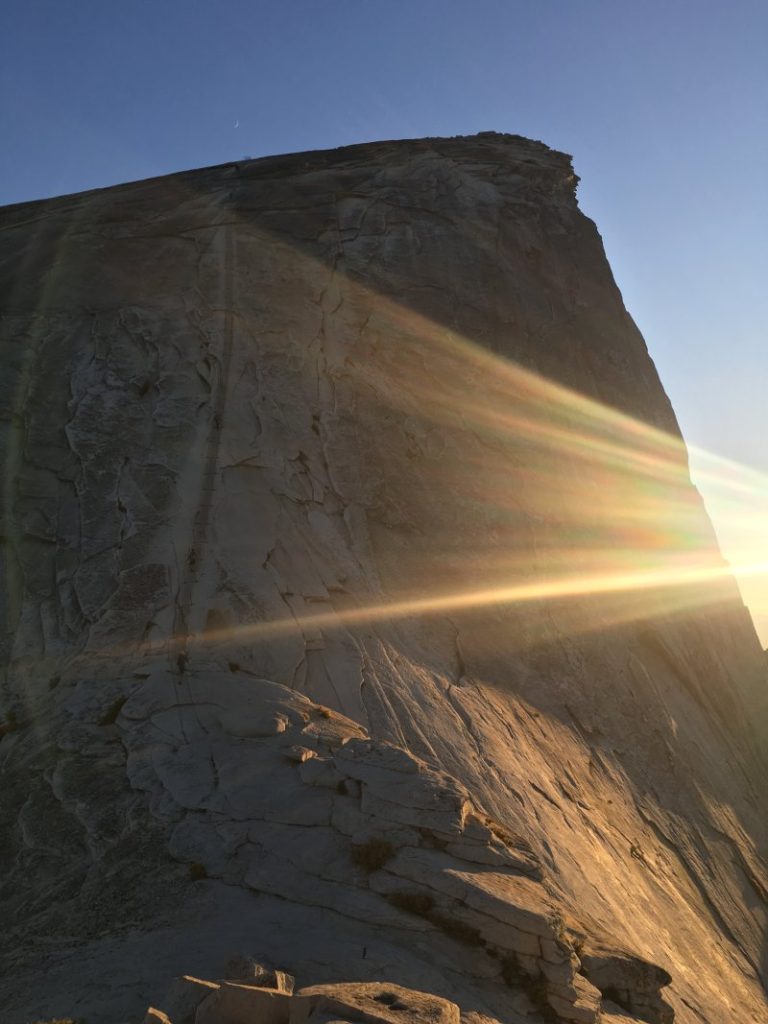
Gorgeous sunset and shadowing on the north face of Half Dome. Making our way down the cables.
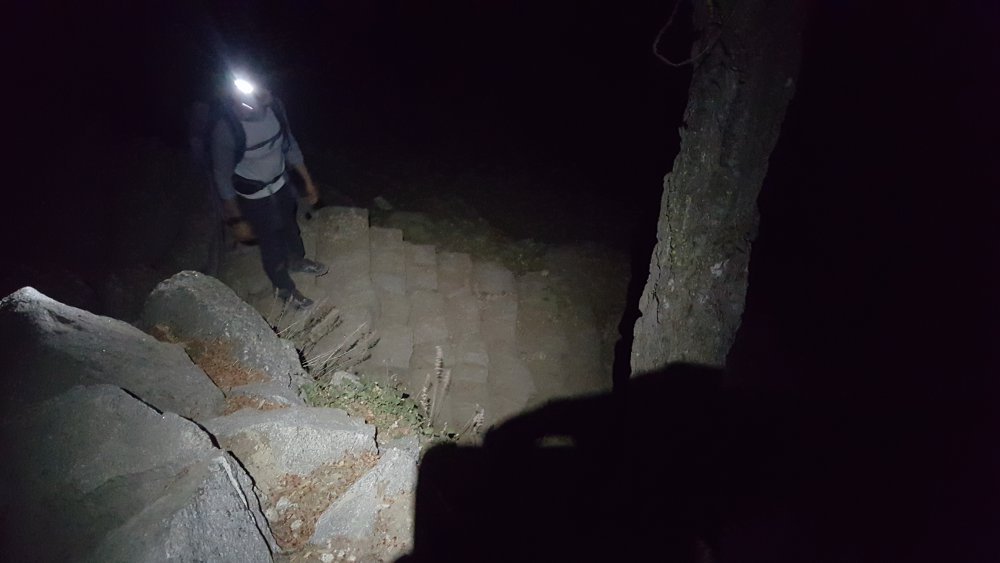
It was around 11pm, still hours to go. Getting delirious. I got really sick in the stomach a little bit after this and needed to stop. So thankful Ted and Jesse were there. We stopped to tidy up our ropes and gear that had become loose and uncomfortable along the many downhill miles. Ted and Jesse offered to help carry my gear, but I didn’t want them to do that. We waited for 15 minutes or so while I recovered, having some light water and light snacks.
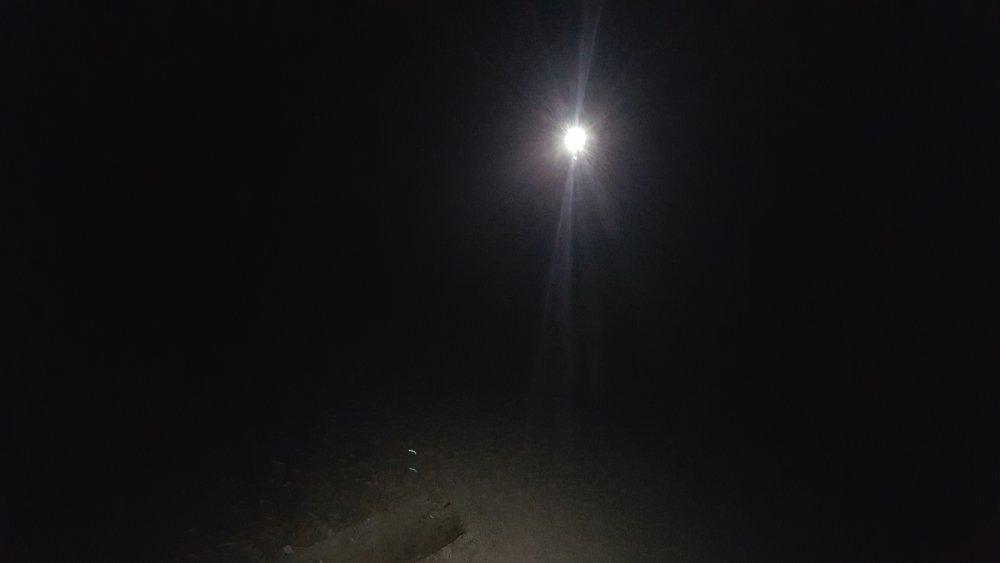
Back at the campsite at 2am. Oh yes! We did it! We high fived quietly, team hugged, then crashed inside our tents. That was epic.
Snake Dike. 22 hours wake to sleep. What an adventure. Would do again.







